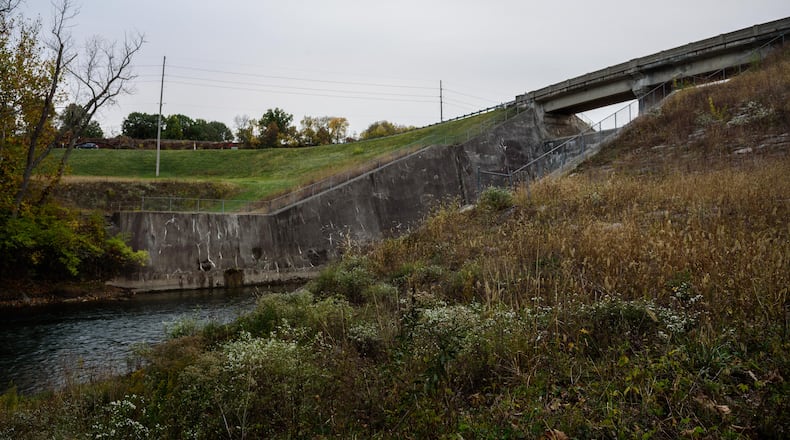The Great Flood of 1913 left Dayton underwater, killing hundreds and displacing thousands.
Dayton’s flood protection system was designed to manage a storm the size of the Great 1913 Flood, plus another 40%. The historic flood saw 9-11 inches of rain in three days across the 4,000-square-mile watershed. This caused rivers to overflow, and parts of Dayton were submerged in nearly 20 feet of water.
Dams and levees
Dayton rests at the convergence of multiple waterways: Stillwater, Mad and the Great Miami rivers and Twin and Wolf creeks.
The Miami Conservancy District’s five dams are located in Montgomery, Greene and Shelby counties, but this system also protects Hamilton, Butler, Preble, Clark, Champaign, Miami, Darke, Warren and Logan counties.
Dry dams differ from other flood prevention structures because dry dams have no permanent pool or reservoir behind them. Other dams continually hold back water, and this water is often used for recreation or even power generation.
At the base of every MCD dam are concrete openings called conduits. These conduits are engineered to only allow the amount of water the channel downstream can handle. When rushing river water rises to the top of the conduit, water begins to flow into the storage basin upstream.
The conduits also push water down a series of concrete stairs that suppress the force of fast-rushing water during floods. The stairs and stilling pool beneath cause the water to turn back upon itself and create a standing wave, which reduces the speed and force of the water, according to the Miami Conservancy District.
Behind each dry dam is land that the Miami Conservancy District holds rights to — this land is used to store floodwater as-needed and spans more than 35,000 acres throughout the entire system. When the river’s flow is at a normal pace, the land is used as parks and for agricultural purposes.
But during intense rainfall, water flows into the storage basins. It can take a few weeks for a storage basin to drain the backed-up floodwaters. The Germantown Dam located in southwestern Montgomery County can store nearly 35 billion gallons of floodwater, according to the Miami Conservancy District.
High water events
Each dam has designated caretakers who maintain the dam. This work includes mowing, pruning and clearing trees and brush near the dam, and removing debris from the conduits and spillways.
Caretakers are also tasked with filling groundhog holes in the earthen dams — these crevices can actually cause seepage paths — and monitoring land owned by the MCD.
Caretakers may have to take action to close floodgates on the ends of storm sewer pipes in the cities of Piqua, Troy, Tipp City, Dayton, West Carrollton, Moraine, Miamisburg, Franklin, Middletown and Hamilton. This keeps the rising river water from backing into the city’s drainage system and flooding neighborhoods, according to the Miami Conservancy District.
During high-water events, other Miami Conservancy District workers also monitor rainfall and river stages, record fluctuations in groundwater pressure and other tasks to evaluate the performance of the region’s dams.
About the Author


